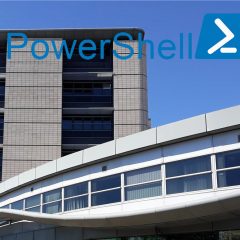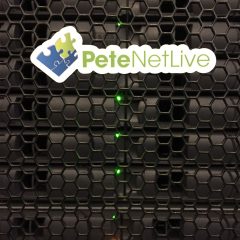PowerShell: Finding Stale User and Computer Accounts
KB ID 0001438 Problem I do this a lot, (usually prior to big migrations), most organisations have no mechanism for removing old users and computers from Active Directory, some don’t even disable the accounts. Find Users Who Have Never Logged On Use the following PowerShell Command; Get-ADUser -Filter { LastLogonDate -notlike “*” -and Enabled -eq $true } -Properties LastLogonDate | Select-Object @{...
Exchange Bulk Export / Import Mail Contacts
KB ID 0001349 Problem I had to do this today and realised, it’s been so long since I did it last, I’d forgotten how to do it. Before we go forward, please be clear, I’m talking about MAIL CONTACTS, these are Active Directory Objects that have an Email address, but DO NOT have a mailbox in your Exchange Organisation, and DO NOT have an Active Directory User. I point this out because you can have MAIL USERS that have...
Migrate Exchange 2010 to Exchange 2016 or 2013
Part 2 Migrate Public Folders Exchange 2010 to Exchange 2013 / 2016 KB ID 0000789 Problem Continued from Migration From Exchange 2010 to Exchange 2016 / 2013 Part 1 Solution Exchange 2016 / 2013 Migration Step 7 “Migrate Public Folders” Note: This article uses the newer ‘Batch Migration’ method. Make sure your exchange server is patched and up to date or the process will not work. Minimum Patch Levels Source:...
SEM – SPAMfighter Exchange Module – Installation and Configuration with Exchange 2013
KB ID 0000824 Problem “I seem to get a lot of spam”, and “I get a lot more spam than I used to” are right up there with “My computer is running slow”. It’s a problem that, eats up users time and fills your mail stores with junk, and time/disk space costs money. SEM is tiny! In a world where a graphics driver is now over 100MB the entire install suite is less than 11MB. This is going into my...
PowerShell – List All Domain Users and Their Last Logon Time
KB ID 0000752 Problem In the past I’ve looked at third party tools to do this but what if you wanted to use PowerShell? Solution Heres’ a cool solution that might interest you also Updating Domain Computer Objects with User and Machine Information 1. On your server paste the following script into Notepad; $NumDays = 0 $LogDir = “.Users-Last-Logon.csv” $currentDate = [System.DateTime]::Now $currentDateUtc...




